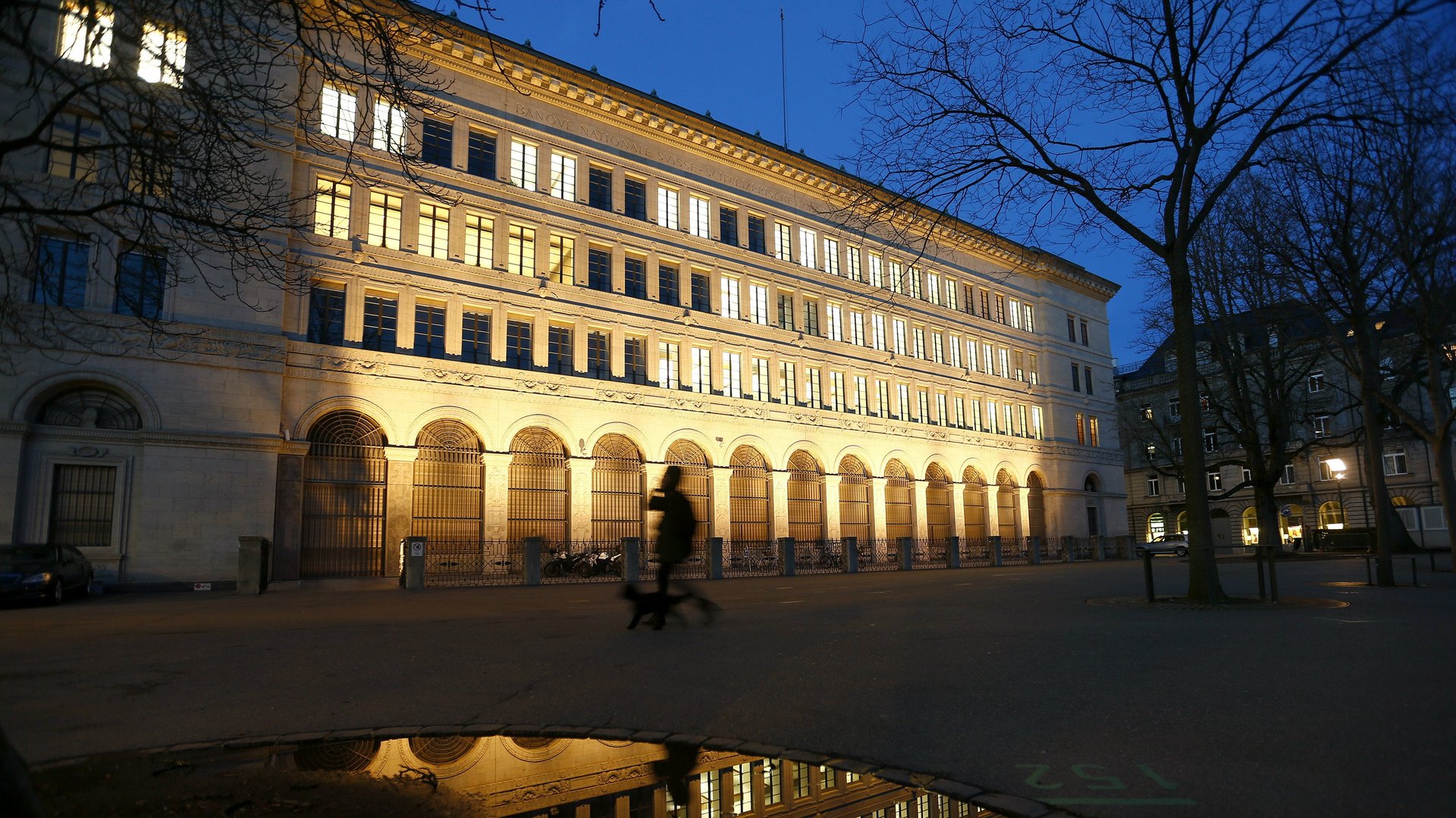The Swiss central bank turned a record-setting loss into a massive profit
If 2016 was a bad year, somebody forgot to tell Switzerland’s central bank. It expects to report a profit of 24 billion Swiss francs ($23.6 billion) for 2016, one of its best years ever (pdf). This is a major turnaround from 2015, when it recorded its biggest loss in history, of 23 billion francs.


If 2016 was a bad year, somebody forgot to tell Switzerland’s central bank. It expects to report a profit of 24 billion Swiss francs ($23.6 billion) for 2016, one of its best years ever (pdf). This is a major turnaround from 2015, when it recorded its biggest loss in history, of 23 billion francs.
Unusually for a central bank, the Swiss National Bank has private shareholders, so it must report earnings like a regular company. The SNB makes its profit from movements in the value of its foreign currency reserves and gold holdings, then distributes money to Switzerland’s 26 cantons, the federal government, and other shareholders via dividends and, if the profit is big enough, extra lump sum payments. The SNB has almost 640 billion francs in currency reserves.
In 2015, the SNB was in an expensive battle with currency markets to stop the franc from appreciating too much, as investors flocked to the haven currency. Without warning, the central bank abandoned its peg against the euro, which sent the franc soaring. This reduced the value of the SNB’s foreign currency reserves when converted into francs, saddling the bank with a huge loss.
The ups and downs of currency markets have proved much more lucrative for the SNB over the past year. In 2016, the franc fell against the dollar and didn’t rise by much against the euro. And so foreign currency holdings generated more than 19 billion francs in profit, with the rest of the bank’s earnings coming from gains on gold holdings, it said yesterday.
How 2017 will go is anyone’s guess, and given that the SNB has swung from record profits to losses (and back) in recent years, it would be wise to prepare for anything.